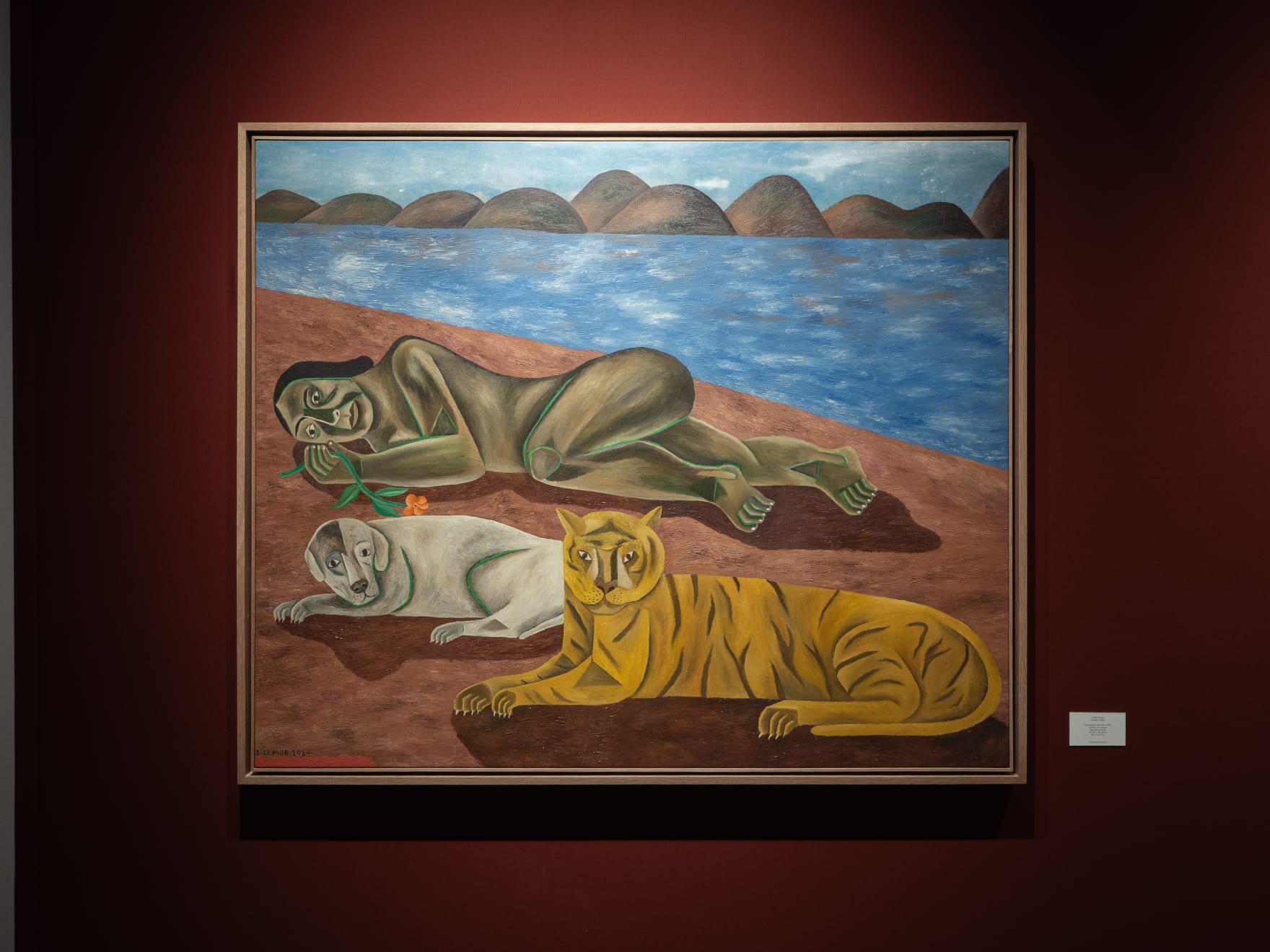Mariane Ibrahim is pleased to present new work by Salah Elmur for the gallery’s inaugural participation at TEFAF Maastricht, featuring five monumental works dedicated to the Blue Nile in Khartoum. The presentation will offer an expanded vision of Elmur’s artistic exploration, complementing his current exhibition The Land of the Sun in Mexico City.
Salah Elmur (b. 1966, Khartoum; lives and works in Cairo) draws inspiration from his upbringing near the Blue Nile, where the rhythms of daily life and the rich cultural history of Sudan left an indelible mark on his practice. His work, which is both autobiographical and collective, captures recurring figures of peasants, fishermen, laborers, women and children in a pastoral world that transcends national boundaries. As Morad Montazami observes, “Elmur creates a portrait that is simultaneously autobiographical and collective, while exceeding national boundaries—depicting a community both real and imagined. While Sudan predominates, it is the biographical triangle of Sudan, Kenya, and Egypt that imbues his paintings with cosmopolitanism and even a certain Pan-Africanism.”
In this presentation, Elmur's paintings evoke the omnipresence of the Blue Nile, where its flowing waters cradle scenes of human and animal life intertwined in quiet communion. Works such as Catfish Season (2024) and Napping by the Nile (2024) reveal a world where sensual poses and vivid colors highlight the shared existence of humans and nature. The figures—men and women alike—are poised with a languid grace, their bodies mirroring the flowing rhythm of the river itself.
Elmur's The White Horse (2024) further amplifies this theme, portraying scenes where animals become integral to the narrative. The poses of his subjects exude a subtle sensuality, celebrating the body as a vessel of connection—both to the river and to one another.
Elmur's artistic journey began at the College of Fine and Applied Art in Khartoum, where he studied graphic design under the mentorship of Kamala Ibrahim Ishaq, a cofounder of the Crystalist movement. Melissa Gronlund explains, “The Crystalists aimed to break free from art’s ties to nationalism and class and move toward Conceptualist underpinnings, particularly as elaborated through a study of the intrinsic properties of materials. However, as the country’s political situation worsened in the 1980s, many artists fled to Europe or neighboring countries.”
Despite the oppressive climate under Omar al-Bashir’s regime, which instrumentalized art for political ends, Elmur persisted in developing his unique vision. After being fired and arrested for a politically charged cartoon, he fled to Nairobi, joining a community of Sudanese artists in exile. These experiences profoundly shaped his work, which, according to Montazami, reflects “a Sudan that is both timeless and anchored in cycles of work and economic production, as well as in children’s games and rituals of birth and mourning.”
Elmur’s art celebrates the vibrancy of Sudanese identity while acknowledging the fragility of coexistence in a society shaped by historical, cultural, and political tensions. Through his works, the Blue Nile becomes a metaphorical and literal current—connecting his personal history with broader cultural and geographic landscapes, and presenting a timeless, deeply resonant vision of life along its shores.








